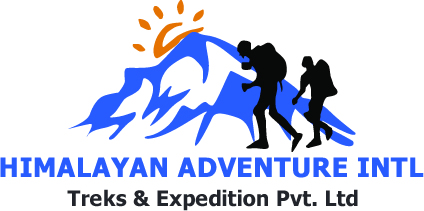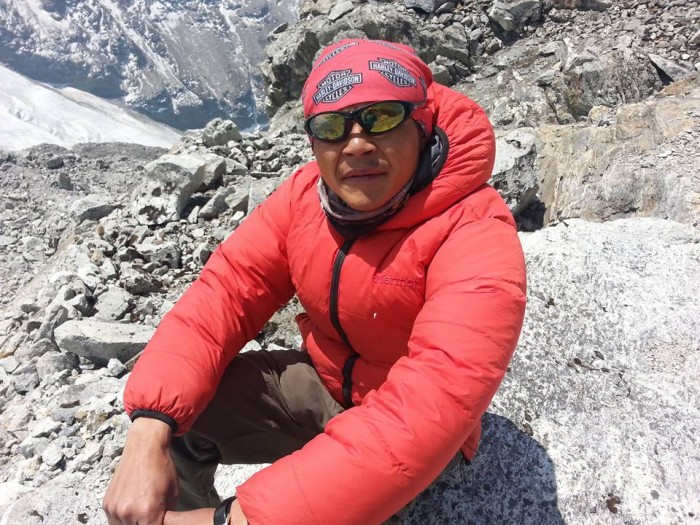Nestled in the heart of the majestic Himalayas lies one of Nepal’s most underappreciated yet technically thrilling peaks—Annapurna IV. Often overshadowed by its towering siblings, Annapurna I and Annapurna III, Annapurna IV offers a unique blend of adventure, challenge, and scenic beauty. At 7,525 meters, this snow-covered summit stands as a true gem for serious mountaineers looking to explore a lesser-known part of the Annapurna range.
In this comprehensive guide brought to you by Himalayan Adventure International Treks, we cover every aspect of the Annapurna IV Expedition, including climbing difficulty, costs, permits, comparisons with other peaks like Ama Dablam and Everest, and what makes this expedition ideal for 2025, 2026, and 2027.
About Annapurna IV
Annapurna IV (7,525 m / 24,688 ft) is located east of the more famous Annapurna III (height: 7,555 m) and forms part of the eastern barrier of the Annapurna Sanctuary. It is often approached from the Manang side and provides a relatively safe but technically demanding climb.
Although it is not as notorious as Mount Annapurna I—which holds one of the highest fatality rates among 8,000ers—the Annapurna IV death rate is significantly lower. Its relatively moderate altitude and safer climbing routes make it a perfect challenge for experienced climbers aiming to graduate from 6,000-meter peaks or looking to acclimatize for larger 8,000-meter expeditions.
Why Climb Annapurna IV?
A Stepping Stone for Higher Peaks
Annapurna IV offers a technically interesting climb with fewer objective dangers like avalanches and seracs compared to Annapurna I or Ama Dablam. It's a great training peak before attempting an Annapurna I Expedition, Everest, or even the Baruntse Expedition.
Low Traffic and Pure Wilderness
Unlike Annapurna Base Camp Treks or Everest Base Camp routes, Annapurna IV remains uncrowded, providing a raw Himalayan experience. You won’t be standing in line to ascend; instead, you’ll immerse in the serenity of the Himalayan wilderness.
Beautiful Summit Panorama
Standing on the top of Annapurna mountain IV offers a spellbinding view of Mount Annapurna Nepal, Gangapurna, Machhapuchhre, Tilicho Peak, and even distant Dhaulagiri.
Annapurna IV Expedition Itinerary
Day 01: Arrival in Kathmandu (1,400 m), transfer to hotel
Day 02: Briefing and expedition preparation
Day 03: Drive to Besisahar, continue to Chame (2,670 m)
Day 04: Trek to Pisang (3,300 m)
Day 05: Trek to Base Camp (4,800 m)
Day 06-08: Acclimatization at Base Camp
Day 09-24: Climbing Period (Camp I – Camp II – Summit – Return)
Day 25-27: Return trek to Besisahar
Day 28: Drive back to Kathmandu
Day 29: Debriefing and celebration dinner
Day 30: Departure
Note: We customize itineraries for Annapurna Expedition Tours 2025, 2026, and 2027, ensuring ideal seasonal windows and optimal acclimatization.
Annapurna IV Climbing Route
The standard route to climbing Annapurna Nepal's fourth summit is the North Face via the East Ridge. The route involves:
The route demands solid technical skills, but it avoids some of the unpredictable weather patterns and avalanche-prone faces seen on Annapurna I.
How Hard is Annapurna IV?
Many climbers ask, "How hard is Annapurna IV?" The answer lies in both technical difficulty and altitude acclimatization. Annapurna IV is not an 8,000er, but it's no walk in the park either. It is graded as Alpine PD+/AD-, requiring experience in:
-
Fixed rope climbing
-
Ice axe usage
-
Crampon maneuvering
-
Glacier navigation
In short, it is harder than trekking peaks like Island Peak but easier than Annapurna I or Ama Dablam. A good benchmark would be its comparison to Adventure Peaks Annapurna IV climbs, which require previous experience above 6,000 meters.
Is Annapurna IV Harder Than Everest?
Technically, Everest has a higher altitude and thinner air, but Annapurna IV presents steeper, more exposed technical climbing, particularly on the East Ridge. While Everest’s popularity brings in more infrastructure and crowd support, Annapurna IV is raw, remote, and challenging in its own unique way.
For climbers who’ve summited Ama Dablam or even Mera Peak, Annapurna IV is a logical next step before tackling Everest.
Annapurna IV Expedition Cost
When considering “How much does it cost to climb Annapurna IV?”, pricing varies based on the outfitter, logistics, and season. At Himalayan Adventure International Treks, our full-service expedition includes:
-
All permits
-
Liaison officers
-
Professional Sherpa guides
-
Full Base Camp support
-
High-altitude tents and gear
-
Meals, logistics, and transport
Estimated Cost: $8,900 – $11,500 USD
This is far more affordable than Annapurna I Expeditions or Everest attempts, which can cost over $30,000.
Peak Permit Cost for Annapurna IV
Nepal's government classifies Annapurna IV as a Group "A" Expedition Peak. The permit cost varies by season and nationality:
| Climber Nationality |
Spring (USD) |
Autumn (USD) |
Winter/Summer (USD) |
| Foreigners |
$500 |
$250 |
$125 |
| Nepali Climbers |
NRs. 4,000 |
NRs. 2,000 |
NRs. 1,000 |
Note: This does not include environmental or liaison officer fees, which we handle for you in our expedition packages.
Expedition Annapurna Clothing & Gear List
When preparing for Mt Annapurna Expedition, packing the right clothing is critical:
Base Layers:
-
Thermal innerwear
-
Moisture-wicking tops
Insulation:
Outer Shell:
Climbing Gear:
Sleeping:
-
-30°C sleeping bag
-
Insulated sleeping mat
All our Annapurna expedition Nepal climbers receive a comprehensive gear list, and rental options are available in Kathmandu.
Annapurna Expedition 2025, 2026, 2027: Best Time to Climb
For climbers planning their Annapurna IV expedition with Himalayan Adventure International Treks, the best windows are:
-
Spring (April–May): Clear skies, less snowfall
-
Autumn (September–October): Stable weather, crisp views
We are now accepting bookings for Annapurna Expedition 2025, 2026, and 2027, including group departures and private guided climbs.
Who is Namas Annapurna IV?
Namas Annapurna IV is not a climber or deity but possibly a misreference or name confusion with “Namaste Annapurna”, often used in the spiritual context or branding related to the mountain. As a result, this term does not officially relate to any historical ascents or expedition teams.
Our Services: Himalayan Adventure International Treks
We specialize in Himalayan climbs ranging from trekking peaks to full-scale expeditions. Our services include:
-
Custom itinerary planning
-
Experienced climbing Sherpas
-
Safety-first approach
-
All-inclusive expedition logistics
With successful ascents of Mount Annapurna Nepal, Ama Dablam, Island Peak, and Mera Peak, we bring decades of mountaineering experience to your Annapurna IV climb.
Annapurna Expedition Tours vs. Other Climbs
| Peak |
Height |
Death Rate |
Technical Level |
Cost Estimate |
| Annapurna I |
8,091 m |
~32% historically |
Extreme |
$25,000–$30,000 |
| Annapurna III |
7,555 m |
Low |
Technical |
$10,000–$12,000 |
| Annapurna IV |
7,525 m |
Very Low |
Intermediate |
$9,000–$11,500 |
| Ama Dablam |
6,812 m |
Low |
Technical |
$6,000–$8,500 |
For climbers preparing for mt Annapurna expedition, we recommend using Annapurna IV as your intermediate training climb.
Annapurna IV Expedition
How much does it cost to climb Annapurna IV?
A: The cost ranges from $8,900 to $11,500 depending on the services and group size.
How much does a peak permit cost?
For foreigners, spring permits cost $500, while autumn costs $250. Additional fees apply for environmental and liaison officers.
Is Annapurna IV harder than Everest?
Technically, yes, Annapurna IV has steeper climbs. However, Everest is more difficult in terms of altitude and duration.
What is the death rate on Annapurna IV?
Very low, especially compared to Annapurna I, which historically had one of the highest fatality rates.
Book Your Annapurna IV Expedition Today
The Annapurna IV Expedition is perfect for seasoned climbers seeking technical adventure without the extreme risks of 8,000-meter peaks. Whether you're preparing for a future Everest, Ama Dablam expedition, or simply want to stand on the top of Annapurna mountain, this climb offers unmatched value and excitement.
Himalayan Adventure International Treks invites you to join our guided expeditions for 2025, 2026, and 2027. With expert Sherpas, personalized care, and uncompromising safety, we ensure your Himalayan dream becomes a reality.
Ready to Climb Annapurna IV?
📞 Contact us today for itineraries, group dates, and booking options.
🌐 Visit Himalayan Adventure International Treks

 Plan Your Trip Now
Plan Your Trip Now 


